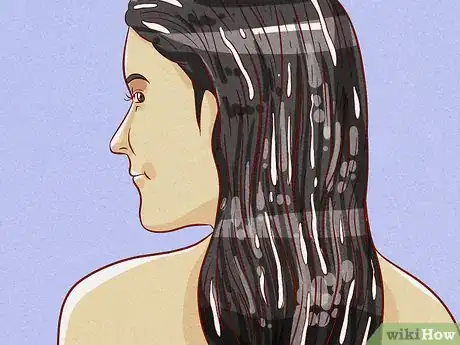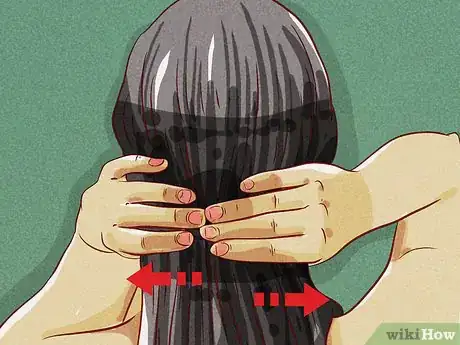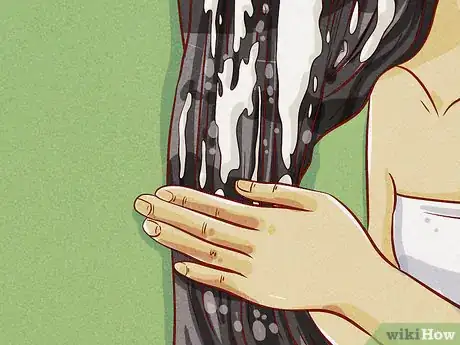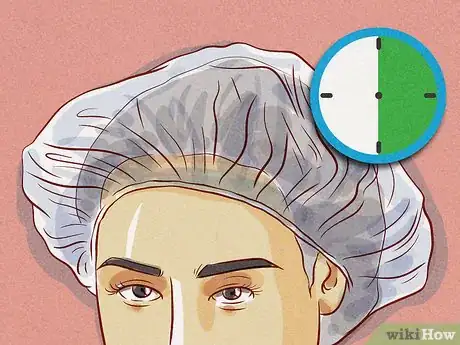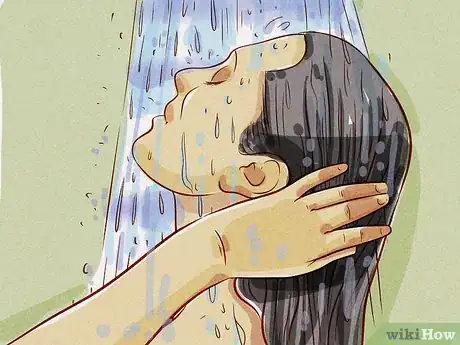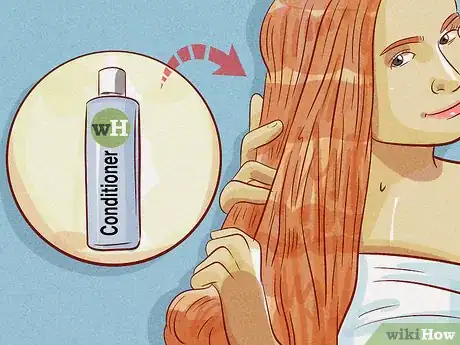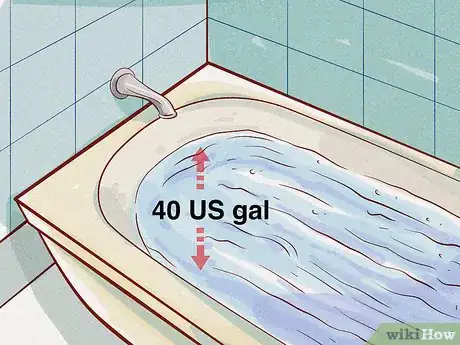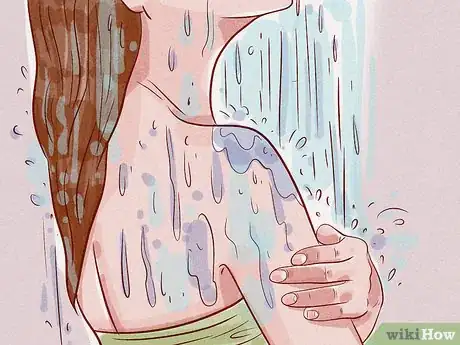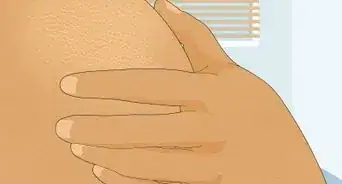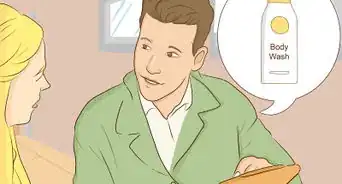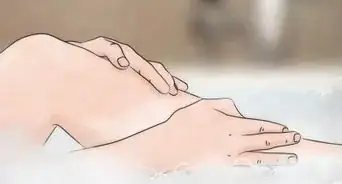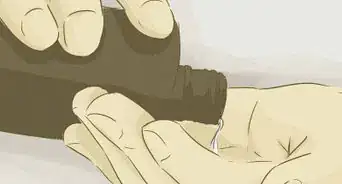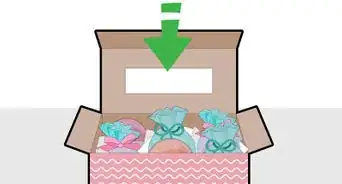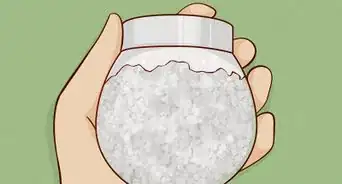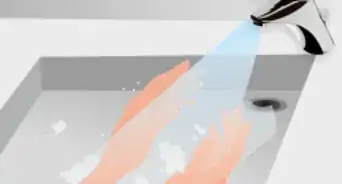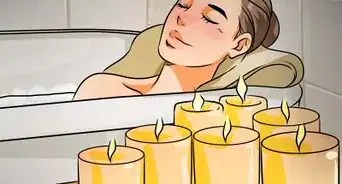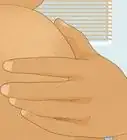This article was co-authored by wikiHow staff writer, Hunter Rising. Hunter Rising is a wikiHow Staff Writer based in Los Angeles. He has more than three years of experience writing for and working with wikiHow. Hunter holds a BFA in Entertainment Design from the University of Wisconsin - Stout and a Minor in English Writing.
This article has been viewed 30,064 times.
Learn more...
Bleach baths can help lighten the color of hair dye so it’s easier to recolor next time. You can also use a bleach bath if you have eczema to remove any itchiness or irritation by killing the bacteria on your skin. Since a bleach bath isn’t much stronger than a chlorinated swimming pool, it’s safe to do in your own home. No matter which bleach bath you use, just be sure to rinse off well!
Steps
Lightening Hair with a Bleach Bath
-
1Do a bleach bath when you want to lighten your hair color. Bleach baths help strip existing hair dye from your hair without doing a full bleach treatment. You can also do a bleach bath if you want to lighten the shade of the dye or your natural hair color by one level. If you want to prep your hair for another dye or want to try a lighter shade, consider doing a bleach bath treatment.[1]
- If you have dark hair or are trying to remove dark colors, do a full bleach to lighten it completely.
- Bleach baths work great if you have fragile hair.
-
2Mix 2 parts hydrogen peroxide, 2 parts shampoo, and 1 part powder bleach. Combine the hydrogen peroxide, shampoo, and powder bleach in a small bowl. Stir everything together until it forms a thick paste that you can easily apply by hand.[2]
- Use hydrogen peroxide labeled 10-volume if you have weaker hair and 20-volume if you have healthy hair.
- Avoid using anti-residue or toning shampoo since it could cause hair damage.
- You can buy powder bleach in the hair care section of your local big box store.
Advertisement -
3
-
4Apply the paste to your wet hair and massage it in. Start with the tips of your hair and work down toward your roots to massage it into your scalp. Make sure your hair is evenly coated with the paste so it can pull the color of the dye out.[4]
- You can use your bare hands, but you may wear nitrile or latex gloves if you have dry or cracked skin.
-
5Put on a shower cap for up to 30 minutes. Cover your hair so the bleach mixture doesn’t drip everywhere. Every 5-10 minutes, pull out a small strand of hair and check the color of your hair. Take off the shower cap after 30 minutes or whenever you’re happy with the color.[5]
- Leave your hair in the cap for up to 45 minutes if it’s thick and long.
- You may also tie your hair up into a bun if you don’t have a shower cap.
Tip: Wear old clothes so you don’t accidentally stain them with the bleach.
-
6Rinse the paste out of your hair with warm water. When you’re happy with the color, take off the cap and rinse your hair underneath warm water to remove the paste. Work your fingers through your hair to make sure you remove all of the bleach.[6]
-
7Apply a hydrating conditioner so your hair doesn’t dry out. Since bleach will dry out your hair and make it brittle, immediately apply a conditioner after the bleach bath. Start near the tips of your hair and work the conditioner down to your roots. Leave the conditioner on for at least 5 minutes before rinsing it out.[7]
- Only do bleach baths once every 2-3 months so you don’t permanently damage your hair.
- You can also use a leave-in conditioner.
Taking a Bleach Bath for Eczema
-
1Fill a bathtub with 40 US gal (150 L) of water. Use the warmest water that you can handle for the best effect. Fill the water level up to the drainage holes at the front of your tub, which should be about 40 US gal (150 L). Let the water cool off enough so you can soak in it.[8]
- You can fill up your tub enough just to submerge the affected area if you want, but you’ll need to use less bleach.
-
2Mix in 1⁄4–1⁄2 c (59–118 ml) of chlorine bleach. Use standard chlorine bleach in your bath and pour it into the warm water. Make sure the has anywhere from a 2-6% concentration of sodium hypochlorite for the best effects. Use your hand to stir the bleach in your tub so it mixes thoroughly rather than having it concentrated in one spot. Once it’s mixed in, you can get in the tub.[9]
- If your bleach has an 8.25% or higher concentration of sodium hypochlorite, then only use 1⁄4 c (59 ml).
Warning: Never use more than 1⁄2 c (120 ml) of bleach since the concentration will be too strong otherwise.
-
3Soak in the tub for up to 10 minutes. Get in the tub and make sure the area affected with eczema is completely submerged. Soak the area anywhere between 5-10 minutes to help kill any bacteria and alleviate irritation. After 10 minutes have passed, you can drain the tub.[10]
- Don’t let the bleach bath get in your eyes or mouth since it will cause irritation.
- The bleach may be painful if you have any dry or cracked skin.
-
4Rinse off in warm water. When you’re finished with your bath, run your shower with the warmest water you can handle and rinse off your entire body. Scrub your body lightly to get rid of any bleach that may still be on your skin. Make sure the water rinses off your tub as well so it doesn’t mix in when you take another bath.[11]
-
5Moisturize your body with lotion after your bath. Bleach can cause your skin to dry out, so it’s best to moisturize when you’re finished. Apply a coin-sized amount of lotion on your hands and massage it into your skin after your bath. Make sure you cover all of the areas that were submerged in your bleach bath.[12]
-
6Take bleach baths up to 3 times a week. Continue taking bleach baths for up to 3 times a week to ease the symptoms of your eczema. Each time, make sure you rinse off completely and moisturize so your skin doesn’t start drying out or cracking.[13]
- If your skin starts getting dried or cracked, stop taking bleach baths.
Warnings
- Be sure to dilute your bleach first or else it could cause a harmful reaction with your skin.⧼thumbs_response⧽
- Bleach baths may cause irritation if you have dry or cracked skin.[15]⧼thumbs_response⧽
Things You’ll Need
Lightening Hair with a Bleach Bath
- Hydrogen peroxide
- Bleach powder
- Bowl
- Shampoo
- Shower cap
- Hydrating conditioner
Taking a Bleach Bath for Eczema
- Chlorine bleach
- Lotion
References
- ↑ https://bellatory.com/hair/How-to-do-a-bleach-wash
- ↑ https://hairstylecamp.com/bleach-bath-hair/
- ↑ https://bellatory.com/hair/How-to-do-a-bleach-wash
- ↑ https://hairstylecamp.com/bleach-bath-hair/
- ↑ https://kasiljean.com/how-to-bleach-bath-hair-home/
- ↑ https://kasiljean.com/how-to-bleach-bath-hair-home/
- ↑ https://kasiljean.com/how-to-bleach-bath-hair-home/
- ↑ https://www.mayoclinic.org/diseases-conditions/atopic-dermatitis-eczema/expert-answers/eczema-bleach-bath/faq-20058413
- ↑ https://www.mayoclinic.org/diseases-conditions/atopic-dermatitis-eczema/expert-answers/eczema-bleach-bath/faq-20058413
- ↑ https://www.mayoclinic.org/diseases-conditions/atopic-dermatitis-eczema/expert-answers/eczema-bleach-bath/faq-20058413
- ↑ https://www.mayoclinic.org/diseases-conditions/atopic-dermatitis-eczema/expert-answers/eczema-bleach-bath/faq-20058413
- ↑ https://www.mayoclinic.org/diseases-conditions/atopic-dermatitis-eczema/expert-answers/eczema-bleach-bath/faq-20058413
- ↑ https://www.mayoclinic.org/diseases-conditions/atopic-dermatitis-eczema/expert-answers/eczema-bleach-bath/faq-20058413
- ↑ https://www.mayoclinic.org/diseases-conditions/atopic-dermatitis-eczema/expert-answers/eczema-bleach-bath/faq-20058413
- ↑ https://www.mayoclinic.org/diseases-conditions/atopic-dermatitis-eczema/expert-answers/eczema-bleach-bath/faq-20058413
